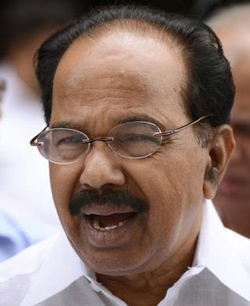 New Delhi, Mar 25: The government will give additional cash subsidy of Rs 25,000 crore to state-owned oil marketing companies to make up for the losses suffered by them on selling fuel at subsidised rates. The amount is over and above finance ministry’s cash outgo of Rs 55,000 crore, this fiscal year.
New Delhi, Mar 25: The government will give additional cash subsidy of Rs 25,000 crore to state-owned oil marketing companies to make up for the losses suffered by them on selling fuel at subsidised rates. The amount is over and above finance ministry’s cash outgo of Rs 55,000 crore, this fiscal year.
Petroleum Secretary Vivek Rae said the additional cash is likely to be available next month.
Three state-owned oil companies – Indian Oil Corporation, Bharat Petroleum and Hindustan Petroleum—have projected revenue loss to the tune of Rs 1,61,343 crore in the current fiscal ending March 31, 2013 on sale of diesel and cooking gas.
Of this Rs 1,61,343 crore, a total of Rs 80,000 crore will be given by the finance ministry, while Rs 60,000 crore will be borne by upstream companies and the rest of Rs 21,000 crore will be carried forward in the next fiscal year.
Speaking at the National Editors' Conference, Petroleum Minister Veerappa Moily said the government is committed to making available essential fuels, particularly cooking fuels to the common man at affordable prices.






Comments
Add new comment